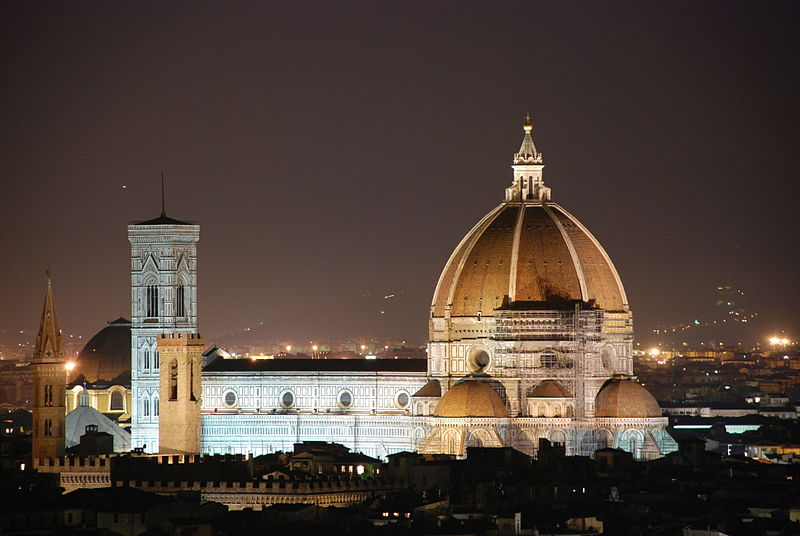I’ve always wanted to go to Italy. I love looking at architecture, marveling at the grandeur of buildings constructed centuries ago that still exist today. I always thought I’d like to visit Venice, because of its romantic allure.
The first time I saw a picture of the Basilica di Santa Maria del Fiore I was sitting in Art History class, and knew that if I ever got to visit Europe, the first place in Italy I wanted to go was Florence.
 |
| Il Duomo, captured by Marcus Obal |
Il Duomo, as it is called by the inhabitants, was begun in 1296 and finished in 1469. The facade was not completed until 1887. It is a UNESCO World Heritage Site, and is visited by millions of tourists each year, who come to admire its beauty and worship; mass is held four times per day, every day, with extra gatherings on Sundays and Holy Days.
I haven’t visited Florence yet, but I have “been there.” The main character of the video game Assassin’s Creed II is a young Florentine, who looks for justice for his murdered family, saves the life of Lorenzo de’ Medici at the very doors of Il Duomo, and climbs everything.
 |
| Ezio Auditore, considering the best way to get to the top AC II Screenshot © Stack Exchange |
One of the great things about the Assassin’s Creed series is that they inject their story into history. The people the main character meets actually lived, and the places the main character goes are as accurate as the game developers could get them. In addition, every historically significant site has a paragraph or two for the player to read to learn about the building or city that they’re about to scale. And one of the coolest things I learned by playing AC II was about the Campanile.
 |
| Il Campanile, the top three floors photo by Giovanni Dall'Orto |
Every church needs a bell. How else are people going to know what time to come and worship? On this day in history in 1334, the bishop of Florence blessed the foundation for Il Campanile, the bell tower beside the church, designed by a 67 year old artist named Giotto di Bondone. The top three floors get successively larger, so that from below, they look exactly the same size as the rest.
Our world has some breathtaking architecture, the most famous of which are used in many forms of entertainment: books, movies, and video games. I’ve read the books. I’’ve seen the pictures. I’ve even climbed up the side of a good number of famous Italian cathedrals while playing a video game. Now all that’s left is to go there myself.
No comments:
Post a Comment